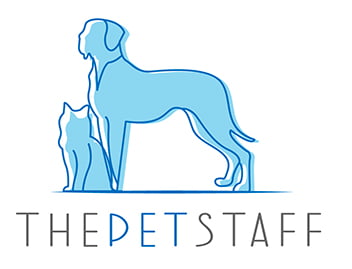The chances are you have seen Teacup Poodle on the gram or TikTok, as they are irresistibly cute and funny. Teacup Poodle is one of the tiniest dog breeds out there, and if you are a Poodle lover, you may just be in luck! This teddy bear-like, tiny, miniature Teacup Poodle is one of the smallest of all the Poodles. They are just like a standard-sized Poodle but much smaller; in fact, Teacup Poodles stay small!
Fun, loving, and loyal, these sassy little teddy bears make great companions to just about anyone as they are easy to care for and take up almost no space. Additionally, they are hypoallergenic and don't require much exercise! Could there be a more perfect little pup?
Could this cute little fuzz ball be for you? Let's find out.
Breed Characteristics
Breed Characteristics
Temperament | Intelligent, lively, and alert |
Intelligence | Very high |
Affection/Friendliness | Affectionate and friendly |
Trainability | Highly trainable |
Mental Stimulation | Requires mental stimulation |
Exercise Needs | Moderate |
Apartment Living | Suitable for apartment living |
Family Friendly | Very family-friendly, great with children |
Pet Friendly | Generally gets along well with other pets |
Drooling Level | Low |
Energy Level | Moderate |
Loneliness Tolerance | Prefers company, can experience separation anxiety if left alone for long periods |
Adaptability | Adaptable to various environments |
Tendency to bark | Moderate |
Origin
The origins of the teacup poodle are the same as those of a standard Poodle. Teacup poodles are a size variation of a purebred Poodle, not a mixed breed.
However, they are considered a designer breed due to the selectively bred process for their size. Teacups and toys are words that are used to refer to very small dog breeds, with teacups being smaller than toys.
Poodles have one of the oldest pure bred dogs of domesticated purebred dogs. These dogs originated in Germany in the 14th century as versatile working and gun dogs, making them the perfect hunting dog. Their unique water-resistant coat made them great gun dogs for fowl hunting. In fact, their name comes from the German word "pudelin," which means splashing in the water.
Sometime between the 14th and 17th centuries, the breed made its way to France, where it became the popular pet of royalty and became known as the French Poodle. It gained popularity and, by the late 17th century, had spread all over Europe. The breed was first recognized as a purebred dog breed registered by the American Kennel Club in 1887.
The more specific history of the toy breed and the teacup poodle, in particular, began in the early 20th century. More people were looking for dog companions that suited city living better, so the development of toy and miniature breeds became popular.
By the late 20th century, the development of the very smallest variation of the Poodle has created: the teacup poodle. Via selective breeding, the smallest pups in toy poodle litter were bred to create these tiny dogs. Other poodle mix dogs were also being bred at this time for the hypoallergenic coat and affable nature of poodles.
Teacup Poodles are classified unofficially as being 9 inches in height and no heavier than 6 pounds, making them one tiny dog! The AKC does not recognize the teacup poodle as a distinct size variation of the Poodle but rather classifies them as toy poodles.
A toy poodle is any poodle that is 10 inches or less, and Teacup poodles are just an informal name for a particularly small toy poodle. The only Kennel Club that accepts the size classification is the Dog Registry to America Inc.
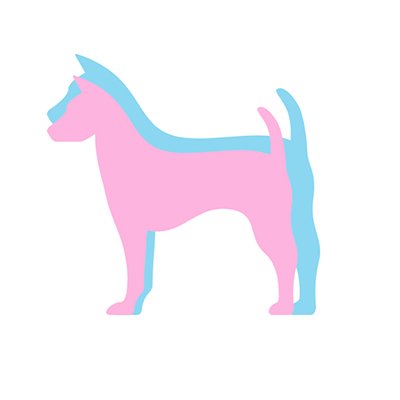
Breed Overview
Height: 9-10"
Weight: 6 lbs
Height: 9-10"
Weight: 6 lbs
Breed Group
Toy
Life Span
12-15 years
Coat
Curly
Coat Length
Medium to high
Hypoallergenic
Yes
Shedding Level
Low
Size
A teacup poodle size is what classifies it in its unofficial size category. To be a teacup poodle, the dog has to stay under 10 inches and weigh 6 pounds or less. Anything bigger is not considered a Teacup Poodle but a toy poodle.
Personality
Teacup poodles share the same loving, playful, and smart personalities as their standard-sized counterparts. They are loyal companions, friendly pets, and just a tad bit bossy.
If trained and socialized properly, these dogs will not have problems with young children, strangers, and other dogs.
Teacup Poodles love and are attached to their owner. When left alone for too long, they will begin to suffer separation anxiety and become destructive. But their attention-seeking disposition makes them very loyal dogs.
Appearance/Colors
Teacup poodles are very small dogs that somehow pull off a regal and elegant look. They have a fluffy, single-layer coat that is low-shed and hypoallergenic. Their coats can come in colors such as black, silver, grey, blue, white, apricot, brown, beige, and red and is usually solid. Along with their thick curly fur, they are known to have dark, oval eyes, long muzzles, and floppy ears.
Temperament
In general, poodles always make good pets for just about anyone, regardless of size. This is true of teacup poodles as well, though there is an additional consideration for those who have small children.
Teacup poodles are not only a bit more fragile than bigger poodles but are also a bit more prone to irritation with small children. As such, they are not ideal for families with little children but can live with young age and older children.
Do not let this small dog develop Small Dog Syndrome, where the dog believes he is the pack leader in the family.
Diet/Nutritional Needs
A Teacup Poodle doesn't eat very much, only about 250 calories or one cup of dry kibble daily. However, they are prone to low blood sugar and hypoglycemia, so you should never skip or underfeed your tiny pup.
The dog food should be specially formulated for toy breeds and ideally split into 2-4 small meals throughout the day. You should speak with your vet if you have any questions or concerns regarding how much to feed your Poodle.
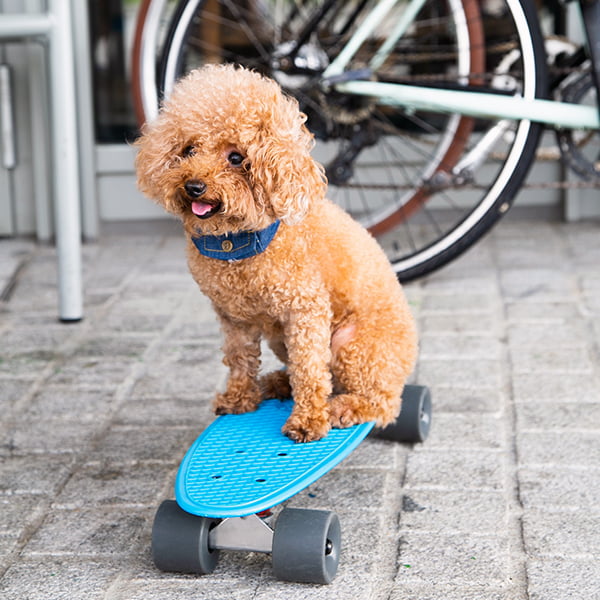
Image source: Unsplash
Activity/Exercise Needs
Being a small breed, Teacup Poodle fits well into any lifestyle. Teacup poodles do not have high exercise needs and can live in apartments or large homes. But they do need a lot of mental stimulation as they get bored easily and become destructive.
These pocket-sized dogs will need a walk of no more than 30 minutes daily, preferably split into 2-3 shorter walks to prevent overexertion. They can become bored easily, so provide plenty of mentally stimulating toys, puzzles, and games to keep your teacup poodle busy and out of trouble.
Grooming Needs
Like all poodles, teacup poodles have low-shed coats that consist of a single layer of fur. This coat will need to be brushed a few times a week to prevent tangles and mats and to remove any loose hairs. Teacup poodle owners will need to take their pups in to be clipped routinely. Nails should be kept short, and teeth should be brushed a few times a week.
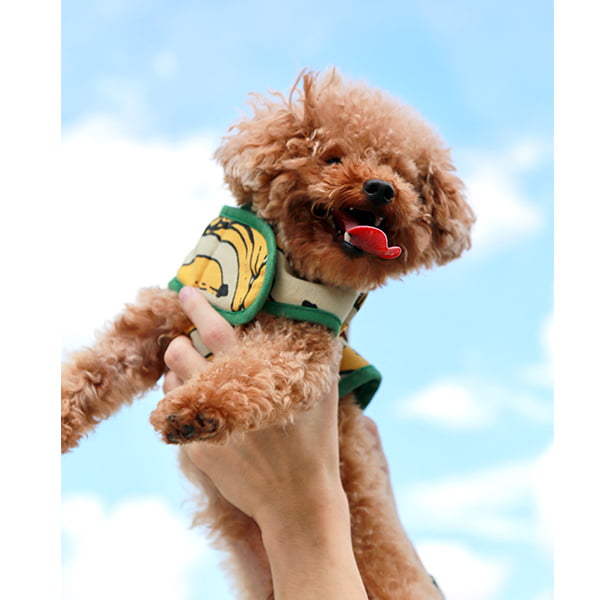
Image source: Unsplash
Adaptability
Teacup Poodle is very adaptable when it comes to thriving in any living space, and their tiny size makes them the ideal pet for any situation.
They are great apartment dogs, family dogs, dogs for seniors, or dogs for individuals who travel frequently and want to bring their pets with them. They do not get along great with little children or even other pets, but with early socialization and training, they can adjust and learn to be better-mannered.
These dogs do not do well alone and can become stressed or destructive. They will also struggle to regulate body temperatures in the cold and so extra consideration should be taken for them in the cooler months and climates.
Trainability of Teacup Poodle Puppy
Aside from being a little stubborn and bossy, Teacup Poodle is pretty easy to train. They are super smart dogs and love to please, which makes them an ideal trainee.
Training sessions should be kept to short five to ten-minute chunks of time a few times a day, and this will help your puppy stay focused and interested in learning.
Use positive reinforcement, patience, and consistency; you will soon have a well-behaved teacup poodle puppy.
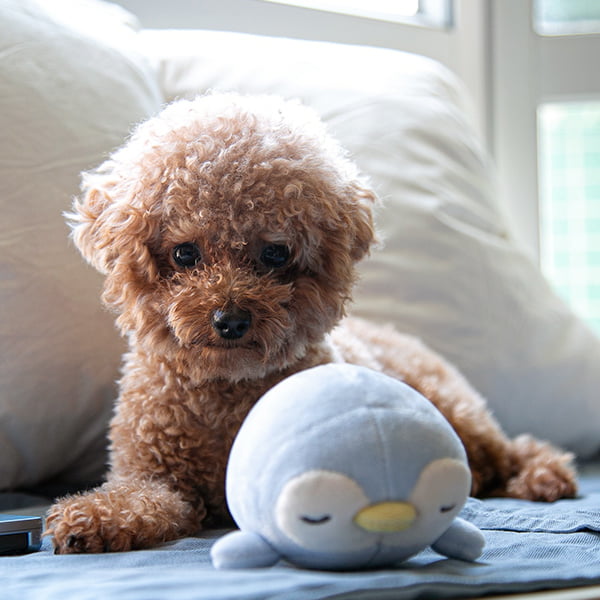
Image source: Unsplash
Life Expectancy
The life expectancy of a Teacup dog is relatively long, and a Teacup Poodle has a life expectancy of 12-14 years.
Teacup Poodle Cost
A Teacup Poodle costs between $1000 to $5000, depending on the breeder. However, always try a rescue or animal shelter first.
The breeding of the Teacup Poodle is a controversial subject. Because it requires breeding the smallest toy poodles, this leads to many possible birth defects or genetic health conditions that may result from breeding the "runt" of a toy poodle litter.
If you are interested in obtaining a teacup poodle, it is very important that you do thorough research to ensure that the proper measures have been taken to ensure that the puppies are healthy.
Potential Health Problems
Despite having a relatively long life span, Teacup Poodles are not generally a very healthy dog breed. This is in part due to the inherited health issues of all poodles but made worse by the specific breeding process that produces teacup puppies.
With careful research and choosing the right breeder, you can reduce some of the chances of genetic issues, but never completely. A few of the most common issues include—
- Progressive Retinal Atrophy (PRA)
- Dysplasia
- Hypoglycemia
- Heart defects
- Patella luxation
